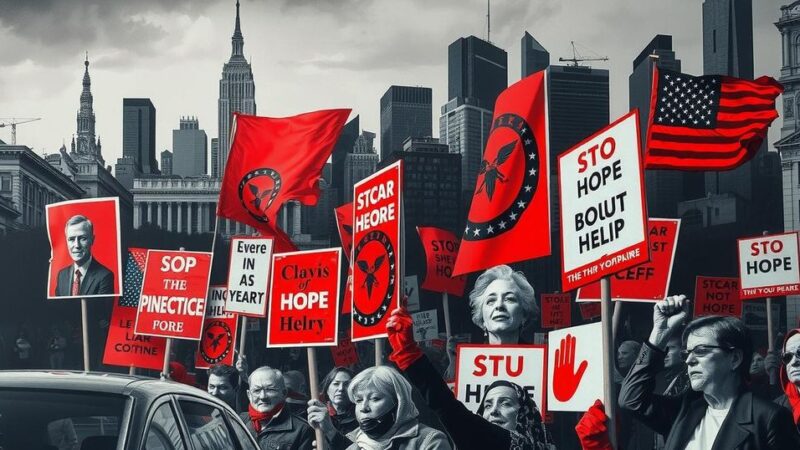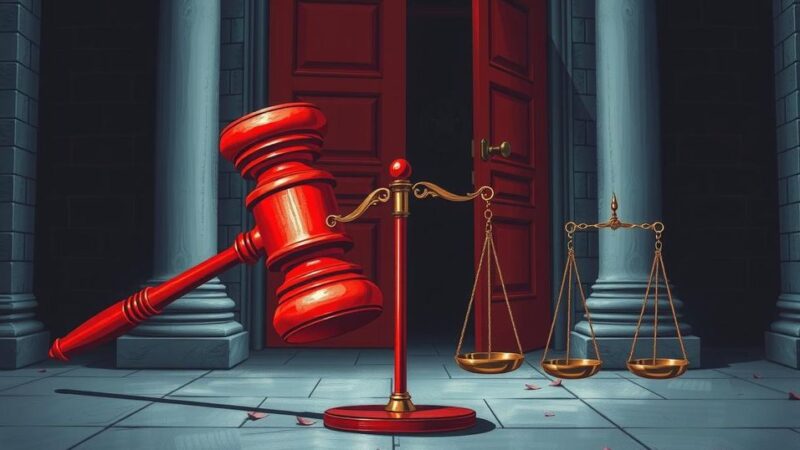Bolivia’s upcoming judicial elections reveal significant concerns about voter engagement and transparency. Candidates seek visibility despite campaign restrictions. The elections pose a risk of political bias within the judiciary, mirroring democratic challenges just as Mexico prepares for similar reforms. Voter discontent highlights systemic flaws as leaders grapple for control in a shifting political landscape.
In Bolivia, the upcoming judicial elections reveal significant challenges surrounding electoral transparency and public engagement. Despite a ban on campaign activities, candidates have found subtle ways to garner attention in La Paz, indicating a desire to connect with voters unfamiliar with the lengthy ballot. This scenario is particularly important as Mexico prepares to forge similar paths in judicial elections under President Andrés Manuel López Obrador’s recent reforms.
Contrary to Bolivia’s intentions to enhance democracy, voters feel disillusioned, seeing the election process as an avenue for political entrenchment rather than impartial justice. Younger voters, like architecture student Marisol Nogales, admit their uncertainty about whom to support, stating, “I’ll flip a coin,” demonstrating a disconnect with the candidates. Mandatory voting compounded voter frustration as long lines underscored the lack of candidate awareness.
Expert opinions illuminate the potential risks of judicial elections; across Latin America, systems perceived as politicized threaten democratic governance. The Supreme Electoral Tribunal’s leadership acknowledges these concerns. Notably, the current political landscape exhibits intense rivalry; Bolivia’s President Luis Arce’s conflicts with former President Evo Morales are emblematic of the struggle for influence within the judicial selection process.
As this convoluted atmosphere unfolded, delays in the election, ostensibly designed to consolidate political control, led to widespread dissatisfaction. The backdrop reveals how certain officials manipulated institutional frameworks to maintain their political agendas, as seen with Morales’ past attempts to extend his presidency through judicial means.
Despite the contention surrounding the elections, the political machinery yields considerable implications on governance, especially given the partial nature of the upcoming vote. Four of nine Constitutional Court positions will be contested, illustrating the importance of this electoral cycle yet emphasizing the existing power dynamics within Bolivia’s judiciary.
The practice of electing judges in Bolivia is unique globally, and the approach has sparked debate about its effectiveness. This system replaced a more traditional nomination process intended to prioritize qualifications and training. Amid mass protests, President López Obrador in Mexico aims for similar reforms to bolster democracy while addressing corruption. Such elections have occurred in Bolivia multiple times, transitioning from a contentious past involving Morales to Arce’s current leadership. This raises the question of how such a system can impact judicial impartiality and political stability.
In conclusion, Bolivia’s judicial elections reflect a complex interplay between electoral processes, public perceptions, and political power struggles. The situation serves as a cautionary tale for Mexico, which is poised to undertake similar reforms. Voters’ apathy towards candidates paired with the politicization of the judiciary poses significant challenges to maintaining democratic integrity. The evolving landscape in Bolivia will undoubtedly provide valuable lessons for neighboring nations as they grapple with judicial reforms and their broader implications.
Original Source: www.newspressnow.com






